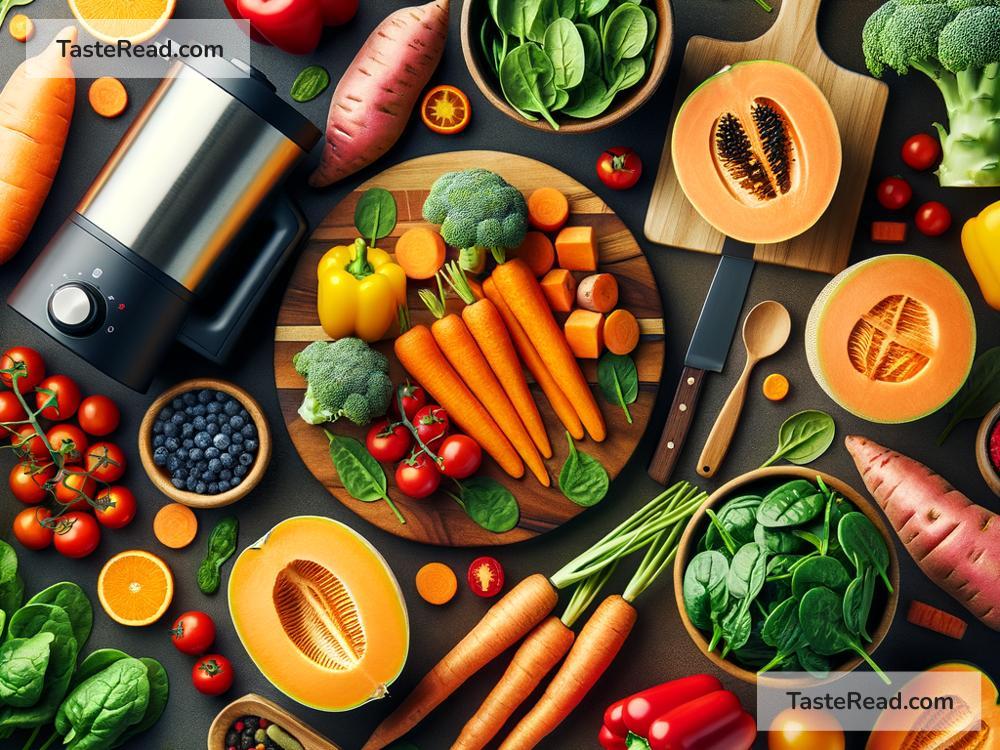How to Incorporate More Carotenoid-Rich Foods Into Your Diet
If you’re looking for ways to improve your health, adding carotenoid-rich foods to your plate is a great starting point. Carotenoids are natural pigments found in plants that give fruits and vegetables their bright colors like orange, yellow, and red. These compounds not only make your meals look vibrant but also offer many health benefits, such as better eye health, improved skin, and a stronger immune system.
In this article, we’ll explore what carotenoids are, their benefits, and simple ways to include more of them in your diet.
What Are Carotenoids?
Carotenoids are plant-based compounds that play an important role in keeping you healthy. There are many types of carotenoids, but the most well-known are:
- Beta-carotene: Converts to Vitamin A in your body to support healthy vision and immune function.
- Lutein and Zeaxanthin: Help protect your eyes from damage caused by blue light and may prevent age-related eye problems.
- Lycopene: Known for its ability to promote heart health and possibly reduce cancer risk.
These compounds act as antioxidants, meaning they fight free radicals, which are harmful molecules that can damage your cells.
Why Should You Eat Carotenoid-Rich Foods?
Carotenoids come with plenty of health perks. When you include these foods in your diet, you may experience benefits such as:
- Better eye health: Carotenoids like lutein and zeaxanthin help maintain healthy vision and may lower the risk of cataracts and age-related macular degeneration.
- Immune system boost: Beta-carotene supports your body’s ability to fight off illnesses.
- Healthy skin: Lycopene and beta-carotene can protect your skin from sun damage and keep it glowing.
- Reduced inflammation: Carotenoids help fight inflammation, which is linked to chronic diseases.
Carotenoid-Rich Foods to Add to Your Diet
Carotenoids are found in many fruits and vegetables. The brighter the color, the better! Here are some examples of carotenoid-rich foods:
- Orange and yellow foods:
- Carrots
- Sweet potatoes
- Squash
- Pumpkin
- Mangoes
-
Papayas
-
Red foods:
- Tomatoes
- Red peppers
- Watermelon
-
Grapefruit
-
Green foods (surprising, but true!):
- Spinach
- Kale
- Broccoli
- Romaine lettuce
- Peas
To boost the absorption of carotenoids, pair them with a small amount of healthy fat like olive oil, avocado, or nuts.
Tips to Incorporate More Carotenoid-Rich Foods Into Your Diet
Adding colorful fruits and vegetables to your meals doesn’t have to be difficult. Here are some practical and easy ways to increase your intake of carotenoid-rich foods:
1. Start Your Day with a Carotenoid-Packed Breakfast
Enjoy a smoothie with carrots, mangoes, spinach, and a splash of orange juice. Alternatively, add sautéed bell peppers to your scrambled eggs or roll them into an omelet.
2. Make Salads Bright and Colorful
Use a mix of leafy greens, cherry tomatoes, shredded carrots, and red bell peppers for your salad. Throw in some avocado and drizzle olive oil for added flavor and better nutrient absorption.
3. Swap Snacks for Carotenoid-Rich Options
Skip chips and cookies. Instead, munch on baby carrots, cherry tomatoes, or sliced mango. Pair these with hummus or a yogurt dip for a satisfying snack.
4. Cook with a Rainbow of Veggies
When making stir-fries, soups, or casseroles, include a variety of carotenoid-rich vegetables, such as broccoli, sweet potatoes, and red bell peppers.
5. Experiment with Smoothies and Juices
Get creative with smoothies by blending spinach, kale, bananas, mangoes, and sweet potatoes. You can also make fresh juices from carrots, oranges, or watermelon.
6. Add Tomatoes to Meals
Tomatoes, rich in lycopene, can be added to pasta sauces, soups, or sandwiches. Try roasted tomatoes for a sweet, tangy burst of flavor.
7. Bake or Roast Veggies
Roasted carrots, sweet potatoes, and squash can be a delicious side dish. Simply toss them with olive oil and seasonings, then bake until tender.
8. Try a New Recipe
Experiment with new dishes that highlight carotenoid-rich ingredients. For example, make a butternut squash soup or stuffed bell peppers with quinoa and veggies.
9. Sneak Veggies Into Comfort Foods
Add shredded carrots or spinach to casseroles, lasagna, or burgers. This is an easy way to “hide” veggies, especially if you’re cooking for picky eaters.
10. Eat Fruits As Dessert
Instead of sugary treats, go for carotenoid-rich fruits like papaya, grapefruit, or mango. Serve them plain or mix them into yogurt.
Small Changes, Big Results
Incorporating more carotenoid-rich foods into your diet doesn’t have to feel overwhelming. Start small and make simple swaps, such as adding extra vegetables to your meals or choosing fruit as a snack instead of processed options. Over time, these small changes can make a big difference in your health.
Remember, eating the right balance of colorful foods isn’t just about improving your health—it’s also about enjoying the beauty and variety of ingredients that nature provides. So, the next time you’re at the grocery store, pick up a rainbow of fruits and vegetables and get creative in the kitchen. Your body will thank you!
By eating more carotenoid-rich foods, you’ll support your vision, skin, and overall well-being—all while adding color and flavor to your meals. Ready to give it a try? Start today and share your favorite recipes and tips with friends and family!


